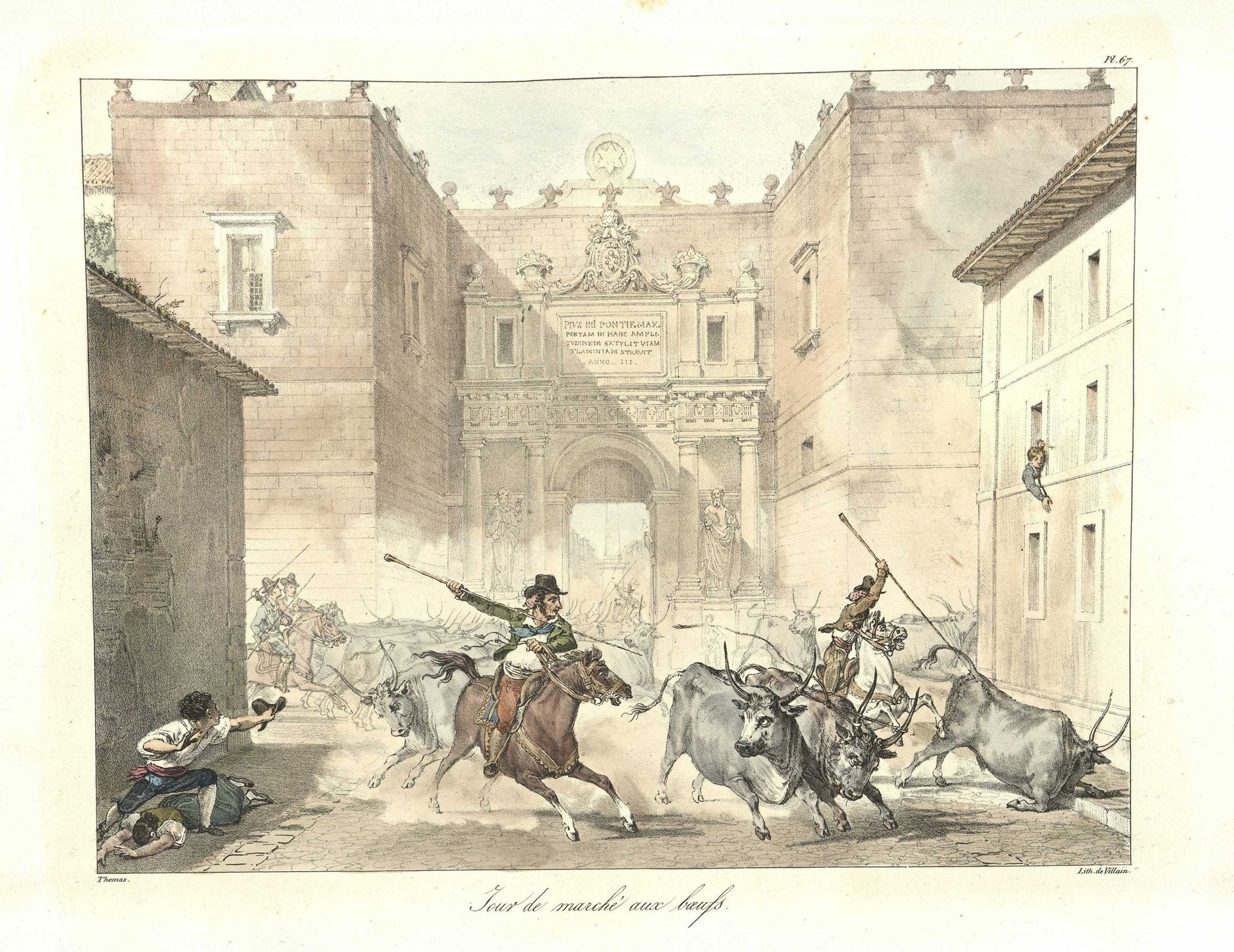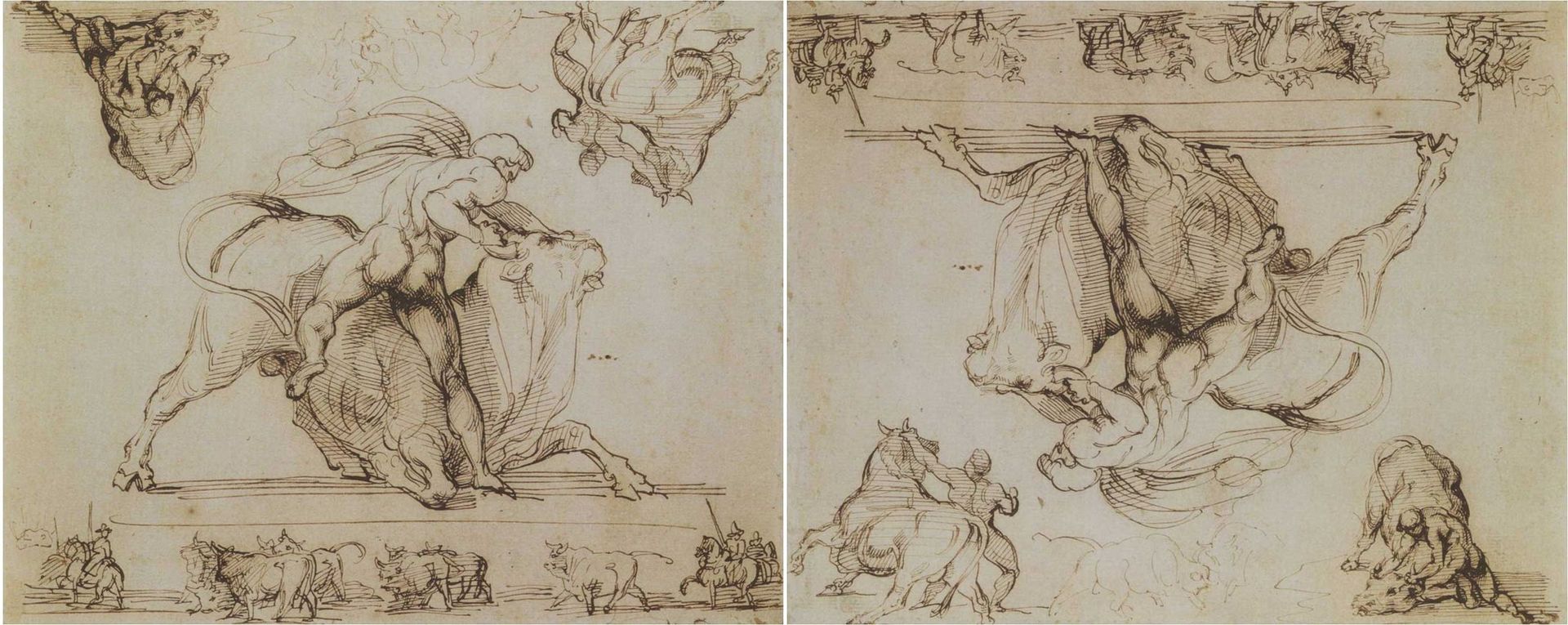This year’s A.W. Mellon Lectures at the National Gallery of Art in Washington, DC, which are being delivered by the art historian Thomas Crow, focus on European art after the fall of Napoleon. The six talks, which are bundled together with the title “Restoration as Event and Idea: Art in Europe 1814-1820,” trace the work of artists like Jacques-Louis David, Francisco Goya, and Théodore Géricault following France’s ruinous invasion of Russia in 1812 and Napoleon’s subsequent ouster as the Emperor of France.
“There are periods where you can see change clearly because a set of arrangements has been unsettled by an external force, so that existing conventions are scrambled,” Crow says. “But they can never go back together again as they were, so that nothing is completely restored.”
The below excerpt is adapted from Crow’s third lecture, “Cut Loose, 1815-1817: Napoleon returns, David Crosses Borders, and Géricault Wanders Outcast Rome,” which was delivered on 29 March.
A livestream of the final two talks, which will be delivered at 2PM on 19 and 26 April, can be found here. Audio and video of Crow’s previous four talks are also available.

Re-installing the old regime
It is 1816, the year after the Battle of Waterloo, and the restored Bourbon monarchy of Louis XVII has set about effacing, as far as possible, the changes wrought by the French Revolution and Empire. In the fine arts, a prime instrument for instilling established norms had traditionally been the annual student competition for the Grand Prix. Its winner was awarded three years of study at the French Academy in Rome, and the competition that year, at a time of political regression, came with an extra measure of normative discipline. As was customary, the finalists took a single subject into their solitary chambers to produce their finished paintings in just seventy-one days. The story chosen for 1816—Oenone Refusing Aid to Paris, an episode from the saga of the Trojan War, but from an esoteric, non-Homeric source—featured a main actor wearing a Phrygian cap (a symbol of Republican radicalism) fatally punished for past betrayals. In this account of the city’s fall, the mortally wounded Paris is forced to turn for aid to his spurned first wife, the nymph Oenone of Mount Ida—which she indignantly refuses.
In the eyes of posterity, far and away the best-known entrant into the competition was Théodore Géricault. But the wayward former cavalryman enjoyed no influential senior sponsor or record of dutiful apprenticeship and was duly eliminated in an early round. The winner anointed to carry the great tradition forward was Antoine-Jean Baptiste Thomas. The fact that Thomas is now lost to the annals of French painting, while Géricault shines as one of its brightest lights, carries a lesson: the surest way to accelerate artistic change is the official attempt to stop it.
Géricault had staked a claim to possessing everything he needed to gain the Grand Prix. In September 1816, he took himself off to Rome on his own account, something the wealth of his Norman family permitted him to do. He threw himself into recording the exemplars of classical sculpture and architecture that an academic prizewinner was expected to master.
Thomas, on the other hand, promptly went his own way in Rome, minimally observant of expected training protocols. He aimed, instead, to thoroughly chronicle the local colour of the city for a travelogue-style set of documentary prints depicting the dress and customs of Roman estates. Taking the liberty of leaving Rome for Paris after only one year of his allotted three, he began labouring on his ambitious compendium, which was finally published in 1823.
Given that Thomas was the first winner of the Grand Prix under the restored monarchy, one could say that his impudent indifference to high-minded, disinterested ideals signaled the first un-making of re-established norms. Géricault came from relative wealth; by the habits of polite society and an officer’s temperament, he would have given little thought to Thomas’s expedient calculation. While residual bad feeling from the Grand Prix competition might also have distanced him from Thomas in the years after 1816, the opposite appears to have been the case: Géricault followed Thomas’s sketches with parallel studies of his own—scores of them—depicting many of the same street scenes, characters, and events that Thomas came to include in his 1823 album.
The parallels are at times so strong that one envisions the artists working in tandem at least some of time. In his compendium, Thomas included scenes of herdsmen from the campagna in Rome driving their maddened cattle though the storied Porta del Popolo, the main northern entrance into the city and the central thoroughfare of the Via del Corso. He also recorded the nearby bullfights, then held inside the Mausoleum of Augustus. One powerfully-imagined vignette in a bullfight print by Thomas records a bullfighter single-handedly wrestling a beast to the ground, a spectacle later transmuted by Géricault into perhaps the most astonishing and consummate works of his Roman sojourn: Homme nu terrassant un taureau, 1817.

Géricault's all-but-invisible work
Géricault’s ink drawing channels ancient representations of the Persian cult deity Mithras slaying a bull, a sacrificial effigy-type imported to ancient Rome by returning soldiers. But contemporary life is just as present. The entire sheet overlays antiquity with the animal torments of both the market slaughterhouse and the bullfighting arena through an internal system of transformations in scale, orientation, and position. But it is only when the viewer engages with the drawing physically as well as visually that these intricacies reveal themselves.
Turning the sheet upside-down brings into focus two vignettes that transform the great central man-animal emblem into the middle point of a temporal sequence: to the left, the athlete first sizes the horn of the beast; to the right, he pins its head to the earth. Despite the 180-degree reversal in orientation, there is a strong arc that launches from the bull’s turned head at the lower left through the large central motif, then falls, like the defeated animal, to the ground in the lower right.
Perhaps last to come into view, at bottom center, rendered in distinctly and intentionally fainter lines, is a purely animal combat between two bulls—the flourish of the tail to the right could never be surpassed. That passage links the bolder vignettes into a complete cycle whereby the human conquest begins and ends in the animal drive for domination.
The nudity of the main figure—for it is plainly the same actor in each image—combined with a placeless background renders the scene abstract and apparently timeless. But turning the sheet back to its upright orientation reveals that the ground beneath the struggling man and animal is not so solid. Underneath a series of summary horizontal lines, an orderly, even stately linear procession proceeds from right to left, one that is distinct from the agonistic combat above. Herdsmen with their pikes and broad-brimmed hats take the lead and the rear of their placid steers. The coordination between this lower band and the forms above is subtle and comprehensive: it seals a circular pact between ancient and modern prototypes.
The sheet is thus no exercise in improvisation. It represents the consummate realization of a profound artistic idea: any painting that the artist might have made later would have been a compromised dilution of the clarity and complexity achieved by this tour-de-force constellation of motifs. It was here, for a brief moment in 1817, that the classical legacy, entrusted in error by the Grand Prix jury to the brash Thomas, could still generate great art. In the confused and contradictory circumstances of the conservative Bourbon Restoration, however, the intelligence of Géricault’s drawing—with its ingenious internal strategies of orientation and its combination of ancient and modern motifs—remained all but invisible.

